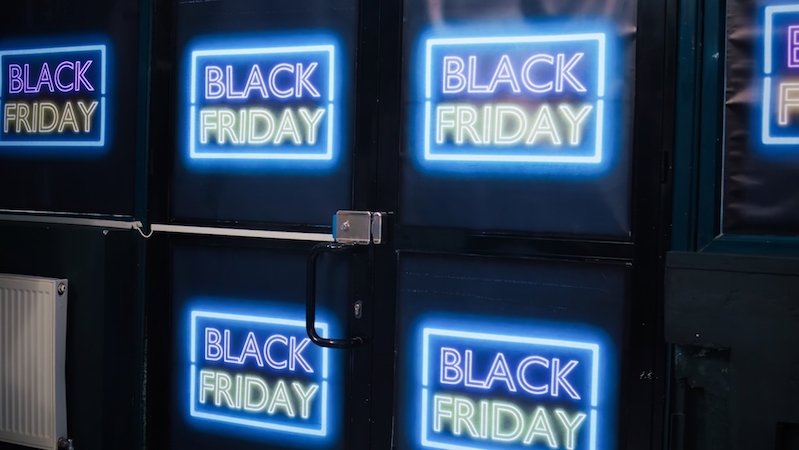The biggest sales event of the year is on our doorstep, as South African retailers and SMEs continue to prepare for Black Friday with equal measures of anticipation and anxiety. According to the Bureau of Market Research (BMR), Black Friday 2023 is expected to usher in an additional retail turnover of R26.6 billion, a substantial increase from 2022 but still trailing the pre-pandemic highs.
This figure is more than a forecast; it’s a beacon illuminating the immense revenue potential. Research by the world’s leading consumer intelligence company, GfK, indicates that 57% of South African consumers delay purchases until a sale or special offer arises, like Black Friday, magnifying the importance of a frictionless checkout experience when the deals surface.
A Mastercard study on consumer spending behaviours notes that over 70% of South African consumers are more likely to complete a purchase if multiple payment options are available.
Mike Bryer, CEO of Zapper, explains, “For small and medium enterprises (SMEs), Black Friday is more than a day; it’s a litmus test of a retailers’ ability to handle an influx of eager customers. Even during the rest of the year abandoned carts have been regarded as a typical ecommerce challenge, as much as 70% in one study — silent testaments to lost sales.
“A lack of payment options can frustrate customers who prefer alternative methods like QR codes, bank payments or mobile wallets. Each abandoned cart reflects a dual loss: immediate revenue and potential long-term customer engagement. To combat this, businesses must offer a versatile suite of payment methods. The solution lies not only in quantity but in quality. Each payment avenue should be robust enough to operate independently if others falter,” adds Bryer.
QR
QR codes continue to rise due to the speed of contactless QR payments, and the cost-effectiveness of using your existing mobile phone to accept card payments. In a study by Merchant Savvy, contactless payments are expected to grow by 150% by 2025, hinting at a future dominated by convenience and speed. For SMEs, QR codes mean expedited service and a quicker turnover at no expense of security. Couple this with payment links sent by the merchant to their customers, and you add another secure and convenient way to accept payments without exposing bank account details.
E-commerce
The e-commerce realm has burgeoned, with a report from Statista highlighting that over 49% of South African internet users are expected to partake in e-commerce in 2023. An e-commerce-ready payments platform is indispensable, with bank card, QR code and bank payment versatility at its heart.
Tap-on-Phone
The ingenuity of tap-on-phone technology is not to be underestimated. Visa found that 73% of small business owners said new forms of digital payments are fundamental to their growth and that 1 in 3 businesses have observed increased consumer spend when tap-on-phone or tap-to-pay options are available. It embodies ease, making mobile devices the new sales terminals without any further investment in hardware.
BNPL
Buy Now Pay Later (BNPL) is expected to grow by 22.2% on an annual basis to reach US$896.8 million in 2023, according to ResearchAndMarkets.com. With more people looking for flexible payment options, and Gen Z and Millennials entering the marketplace, this method of payment has seen huge growth. Merchants can accept BNPL easily through Zapper’s issuing integration with Payflex and MoreTyme, with next business day settlements and the same single reconciliation.
Beyond payments
There are two further factors that cannot be overlooked. With players like Takealot, and Amazon on the way, it is highly competitive out there. “Marketing and getting the traffic in store and online is a key success factor. Accessibility to capital loans is imperative in ensuring the marketing land grab, and guaranteeing stock inventory, which is why we introduced a product called Quick Capital a few years back. Customers don’t just need payments processing, they need to attract customers,” says Bryer. A World Bank report cites the impact of quick loans on SMEs’ growth, underscoring that financial elasticity is crucial for seizing Black November opportunities.
If a loan is not tenable, a payments partner that uses payments data to target and signal to customers to choose their retail outlet through vouchers, discounts and loyalty can be the smartest and most effective marketing tool of all, led by customer preference and previous purchase history. By leveraging payments data, businesses can target consumers with precision, drawing them into stores or online platforms with offers that resonate on a personal level. Such insights allow for strategic promotions, maximising exposure during peak shopping periods and beyond.
“More than QR code payments and e-commerce facilitators, we embody the transformation from a payment processor to a growth partner, providing our partners with access to capital and access to customers. We deliver a tapestry of payment options, including innovative tap-on-phone technology, transforming smartphones into payment hubs. This accessibility ensures that no customer, tech-savvy or otherwise, is turned away. Our Quick Capital funding empowers merchants to scale up, ensuring that they’re not just equipped for Black Friday but poised to excel. It is not about surviving the wave but riding it to new heights. In an economy where every rand and cent matter, this opportunity for growth is not just advantageous; it’s essential,” he concludes.
As Black Friday approaches, SMEs stand at a crossroads. One path leads to potential revenue leakage – abandoned carts are common, after all – often due to an unforeseen hurdle; the other leads to banking the sale after a year in which retail has been tough and 2024 remains uncertain. The question is not if the R26.6 billion prediction will come to fruition but whether merchants will be equipped to claim their share on the day, and onboard a new customer into the year ahead.
Brandstories Disclaimer:
Brandstories is not liable for the contents of the information published on this platform. The information which subscribers publish on this website is for general information purposes only and Brandstories facilitates the ability for viewers and subscribers to access this platform. Subscribers who publish their content on Brandstories are held responsible for their own content. This includes ensuring that it is factually accurate, grammatically correct, free of spelling errors, and does not contain unsavoury content that could result in legal action. In the case of linguistic translations, the onus is on the client to ensure that the translation is accurate. In no event does Brandstories make representations or warranties of any kind, expressed or implied about the completeness, accuracy, reliability, suitability or availability with respect to the information supplied and published. This website includes links to other websites, including third party websites. Brandstories does not recommend, endorse or support any views that are held by subscribers publishing information, and within these links provided. Furthermore, Brandstories does not have control over the nature, contents and availability of information contained on these sites. Any form of reliance readers and consumers may place on information published on Brandstories is strictly at their own risk. Brandstories makes every effort to ensure that the website is up and running smoothly at all times, however Brandstories does not take responsibility for, and will not be held liable for times when the website is temporarily unavailable due to technical glitches that are beyond our control.


